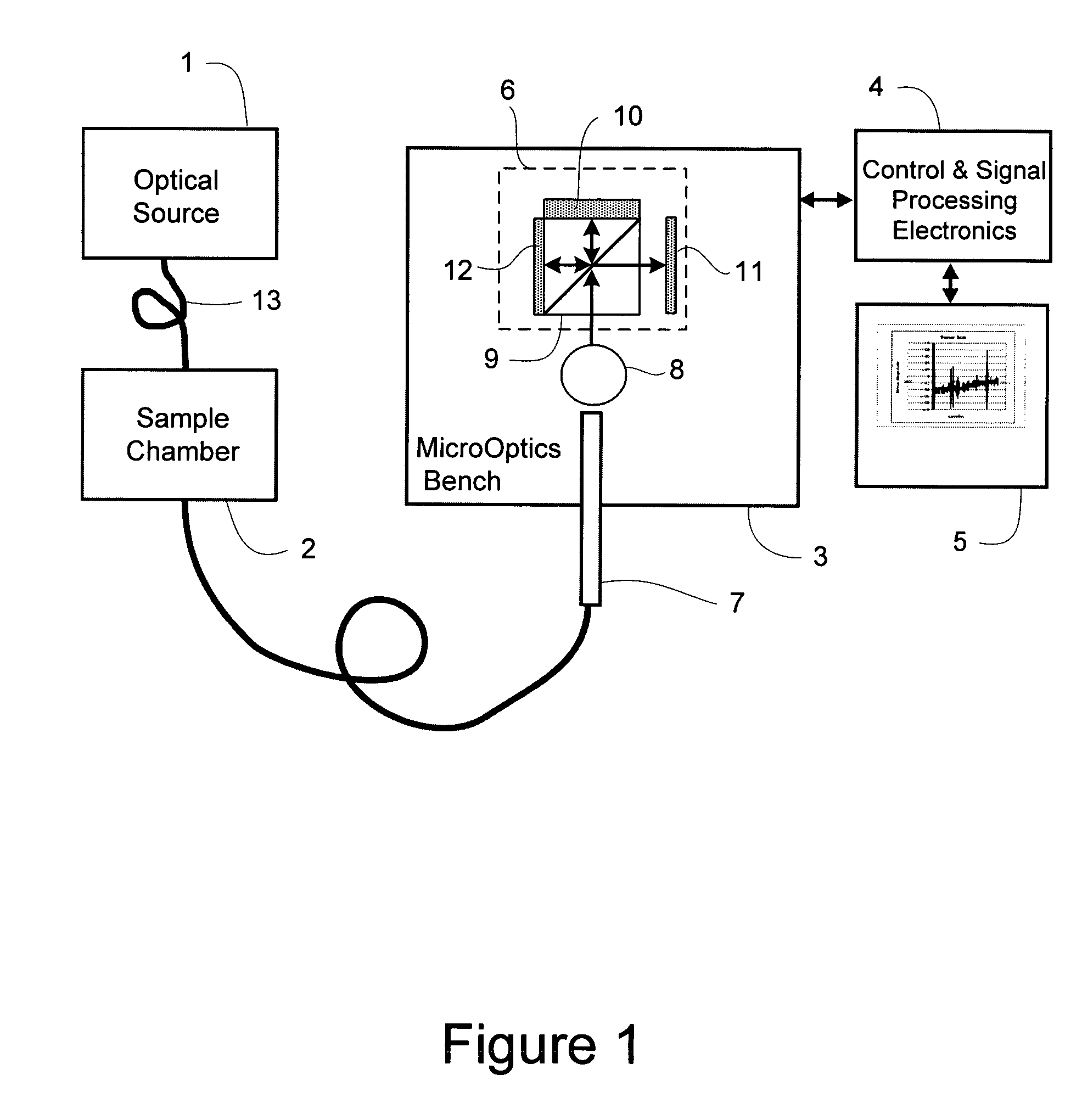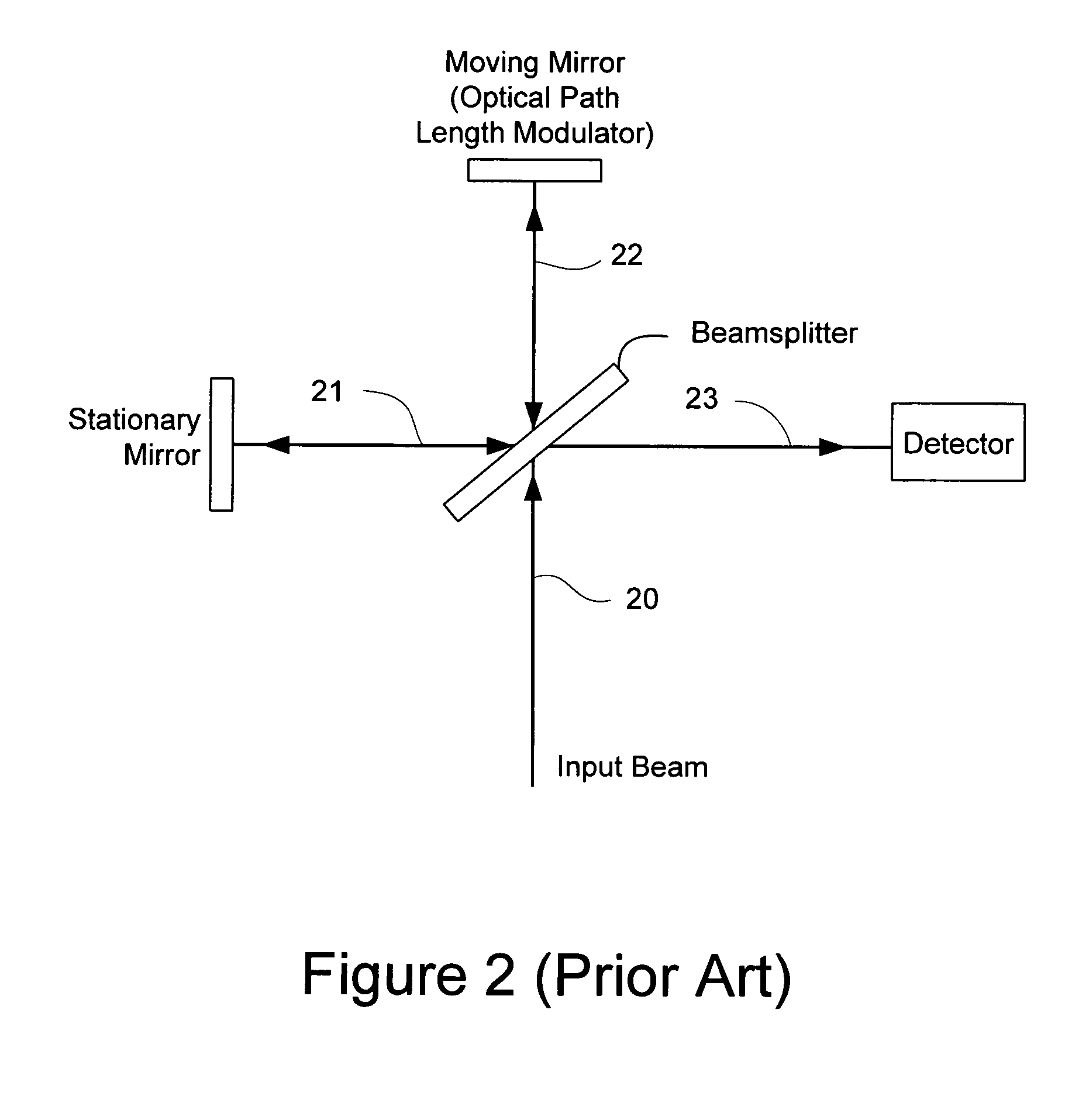Miniature fourier transform spectrophotometer
a fourier transform and micro-optoelectromechanical technology, applied in the field of fourier transform spectroscopy, can solve the problems of increasing the threat of chemical/bio agents and toxic industrial chemicals in both traditional military activities, the inability to deliver detection instruments on small platforms, and the limited accessibility of detection instruments
- Summary
- Abstract
- Description
- Claims
- Application Information
AI Technical Summary
Benefits of technology
Problems solved by technology
Method used
Image
Examples
Embodiment Construction
[0027]The present invention and its advantages are best understood by referring to the drawings. The elements of the drawings are not necessarily to scale, emphasis instead being placed upon clearly illustrating the principles of the invention.
[0028]FIG. 1 is a block diagram of the invention, which is comprised of an optical source 1, a sample chamber 2, a microoptics bench 3, signal processing electronics 4 and a graphical user interface 5. The microoptics bench 3 holds the fundamental component of the Fourier transform spectrophotometer: a miniature interferometer 6 able to operate at UV, visible, and NIR wavelengths. The interferometer 6 includes a cube beamsplitter 9, a stationary mirror 10, a detector 11, and an optical path length modulator (multimirror) 12.
[0029]When a sample is placed in a sample chamber 2, the optical source 1 is turned on and transmits light through an optical fiber 13 into the sample chamber 2. The light then exits the sample chamber 2 and enters the mini...
PUM
 Login to View More
Login to View More Abstract
Description
Claims
Application Information
 Login to View More
Login to View More - R&D
- Intellectual Property
- Life Sciences
- Materials
- Tech Scout
- Unparalleled Data Quality
- Higher Quality Content
- 60% Fewer Hallucinations
Browse by: Latest US Patents, China's latest patents, Technical Efficacy Thesaurus, Application Domain, Technology Topic, Popular Technical Reports.
© 2025 PatSnap. All rights reserved.Legal|Privacy policy|Modern Slavery Act Transparency Statement|Sitemap|About US| Contact US: help@patsnap.com



